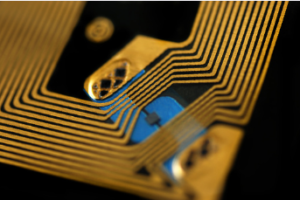RFID (Radio Frequency Identification) technology can help you track your assets and improve inventory management. It can also be a helpful tool for monitoring theft and product loss in your business.
 Many different industries utilise this tracking system, from hospitals to retail stores. Here are five unique ways to use RFID to help your company.
Many different industries utilise this tracking system, from hospitals to retail stores. Here are five unique ways to use RFID to help your company.
Streamlined Inventory Management
RFID technology has made it easier for warehouses to manage their inventory. It provides managers with real-time updates about their stock and can help them keep track of the inventory movement in and out of the warehouse.
The system also allows managers to automate first-in-first-out (FIFO) and last-in-first-out (LIFO) inventory management to optimise inventory flow. It can reduce storage costs, improve profitability, and minimise tax liabilities.
In implementing RFID, businesses must purchase tags and readers. These products are designed to communicate with each other and work in conjunction with a software application that interprets the data from the tags and converts it into useful information.
Unlike barcodes, which can only contain a code and can’t be read by computers, RFID tracking tags can be read by computer-based systems that use radio waves to transmit information from the reader to the tag. Once an item with an RFID tag is close enough to the reader, the antenna sends electromagnetic energy that activates the IC in the tag’s circuitry.
It signals the reader to interpret what’s being sent by the tag, which can be any data, such as a product’s UIN or inventory status. Once the reader receives this information, it can calculate inventory levels and trigger reorders if necessary.
Choosing the correct type of RFID reader for your specific needs is essential. The choice depends on the frequency band, coverage area, material properties and application.
Some of the most popular types include fixed and hand-held scanners. Both can be used in a variety of settings and conditions.
A fixed reader has 1 to 8 antenna ports, while a hand-held reader can be equipped with one or more. The number of antennas you need will depend on the coverage required for your RFID application.
Streamlined inventory management is a critical component of any successful supply chain. RFID systems can help businesses improve their efficiency by minimising inventory theft and helping them avoid running out of inventory. The technology can also record temperature changes in the warehouse and on the shelf, which can help supply chain experts spot spoilage.
Reduced Loss
RFID tracking allows businesses to track assets in real-time and gain greater visibility into the status of each item. It will enable firms to increase their productivity and eliminate unnecessary overhead costs.
By reducing the number of unaccounted losses, RFID can help improve customer service and increase inventory accuracy, ultimately driving more sales. It also ensures that the company meets its supply chain obligations by tracking each process step.
It also allows vendors to collaborate more with customers, offering continuous inventory replenishment. It will enable them to reduce inventory holding costs and streamline production processes, resulting in lower labour hours and increased profits.
With the increased online shopping, retailers are looking for ways to improve customer service and reduce theft risk. One way to do this is by offering buy-online, pick-up in-store (BOPIS) services. With more accurate inventory counts, you can confidently provide BOPIS and deliver a smooth, hassle-free experience for your customers.
Using an RFID-based system can save you millions of dollars over time, preventing the loss of carts, ensuring that you always have the right amount of coaches in stock, and cutting down on inventory management costs. Companies such as Air Canada, Johnson Controls, Club Car, and Advanced Apparel have used RFID systems to increase efficiency.
Increased Customer Service
Retailers can use RFID tracking to improve the customer experience in several ways. For example, customers could use technology to find their products without spending much time in line. It can help increase customer satisfaction, a crucial goal for many retailers.
Using RFID can also free up employees and reduce the amount of work they have to do. For example, if a retailer uses RFID to track the inventory of clothing items, they can reduce the time staff must spend checking inventory and counting individual products.
It can make the store more efficient and reduce the need for staff to stay late to count stock, which is a great way to keep customers happy. It can also help prevent theft and product loss.
The retail industry is increasingly interested in RFID because it can help businesses streamline their processes and improve the customer experience. It can lead to increased customer satisfaction, which will ultimately help a company make more money.
Enhanced Security
Companies can use RFID tracking technology to ensure that their inventory and assets are safely stored and managed. It can reduce loss, improve efficiency, and protect sensitive information and products from theft.
Several organisations, including Johnson Controls, Air Canada, and Club Car, use RFID for asset tracking. These companies can track their goods from when they leave the manufacturer to when they’re delivered to their clients. They also can use RFID to verify that their equipment is being used correctly and in the right place at all times.